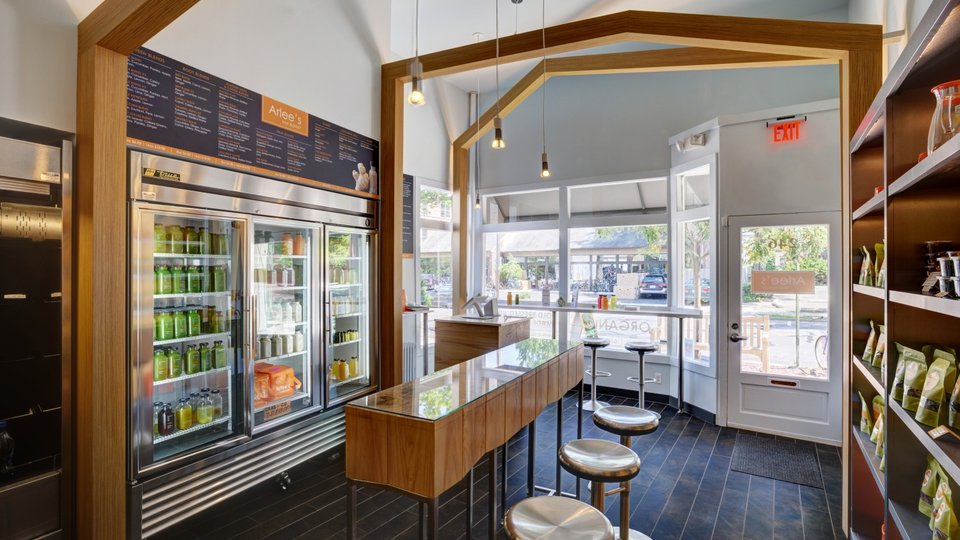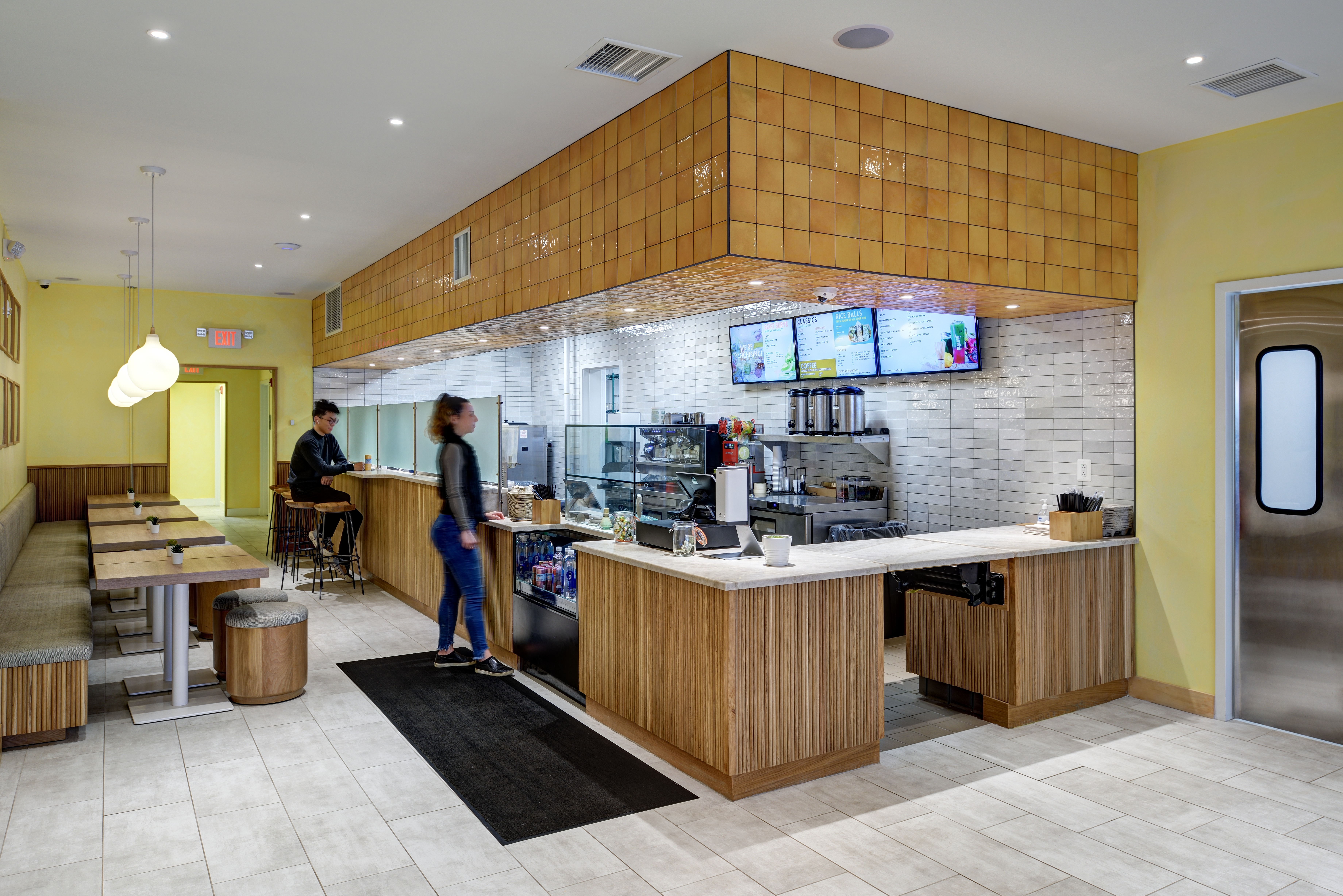Operations
Transforming your old restaurant: Expert insights on nailing the perfect makeover
When a QSR starts to feel tired and out of touch with contemporary dining trends, it's essential to implement a well-thought-out strategy to breathe new life into the establishment and attract a fresh customer base.

September 27, 2023 by Mandy Wolf Detwiler — Editor, Networld Media Group
Turning around a dated restaurant can be a challenging yet rewarding endeavor. When a QSR starts to feel tired and out of touch with contemporary dining trends, it's essential to implement a well-thought-out strategy to breathe new life into the establishment and attract a fresh customer base.
The first step in reviving a dated restaurant is to reevaluate its concept. Consider the target audience, location and competition. You might decide to revamp the menu, decor and overall ambiance to align with current trends and customer preferences. This could involve anything from updating the interior design to adopting a new cuisine or theme.
 |
Joshua Zinder, managing partner of integrated design firm JZA+D. Provided by JZA+D |
If a budget allows, invest in physical renovations to create a more modern and inviting atmosphere. Regular maintenance and cleanliness are essential to maintaining a positive image.
QSRweb.com talked to Joshua Zinder, AIA, LEED AP, managing partner of integrated design firm JZA+D in Princeton, New Jersey, by e-mail to learn how and when to turn around a dated restaurant.
Q: What are the key architectural elements that typically need to be addressed when revitalizing a dated restaurant space?
A: These days the big challenge is the venue's street presence, which is more important than ever for attracting new customers. What you want to do is to project the brand identity outward to connect foot traffic to the brand and the dining experience awaiting customers inside. To do this effectively you need to do more than just set out tables. Architecturally speaking the repositioning effort should include lots of transparency, French doors, even things like retractable full-height window walls. This approach is recommended for all kinds of fast casual and quick-service, including coffee shops. This used to be more associated with the European model of street-facing food service, but post-COVID it's more or less a given for U.S. venues.
Q:How do you balance preserving the restaurant's existing character with modernizing its design to attract contemporary customers?
A:The designer has to start by considering the client's goals for the modernization effort as well as the restaurant brand. What are they trying to achieve, or to say to new and existing customers? So much depends on the answers to those questions, but in the end the redesign should focus on connecting the brand and their food to the space, to create a positive memorable experience that customers will want to repeat. JZA+D's recent redesign of an Italian restaurant offers a good example: this fine-dining restaurant opened with a post-modern style that gave it a "destination" effect that worked well for a time, but the deep, dark space did not connect visually with the street which meant lost opportunities for new patrons in this vibrant downtown shopping district. Our redesign merged the traditional Italian vibe with a lighter, brighter, more welcoming feel, and emphasized transparency — combined with eye-catching large-format art — that would grab the attention of passersby and establish an immediate connection to the dining experience awaiting them inside.
Q:What considerations should be made regarding the restaurant's layout to enhance both functionality and aesthetics?
A: In the highly competitive quick-service market, how your service counter presents itself is critical. When the customer walks in, a trash bin should not be the first thing they see. The guest should immediately encounter an identifiable path to the menu and the point of service, and they should not have to navigate a sea of tables or other obstacles along the way. You want it to be clear that the guest orders and receives food in one location, and sits down in another — the flow should be as clear as possible for the new customer upon entering. Same goes for the aesthetics: they should connect to the food and the experience, supporting the guest's ease of enjoyment. When it's unclear, it's uncomfortable. If the guest's experience was not focused on the food, they may leave and never return.
 |
Provided by JZA+D |
Q: In terms of sustainability, what architectural strategies can be employed to make the restaurant more eco-friendly during the renovation?
A: At JZA+D, all of our work in all project types follows principles and best practices for environmentally conscious green design — not just because it's important for the planet, but because it can support our client's goals when done correctly. Renovating means a restaurant has to close its doors. Naturally the owner wants to reopen as soon as possible so they can get back to earning revenue. So the materials palette should be composed of entirely zero-VOC finishes and products — paints, flooring, countertops, recycled tile, etc. — not only because these are better for the environment, but because they have less of an offensive chemical smell that will negatively impact the dining experience. It won't help the word-of-mouth around the reopening to have a venue that smells like a construction site. We also recommend FSC-certified wood products, which these days hardly differ at all in cost from less sustainably harvested alternatives. If the brand identity is linked to environmental responsibility in any way, we try to help our client find opportunities to tell that story — for one client's retail juice counter we sourced reclaimed wood from Superstorm Sandy to make bespoke countertops that speak to environmental urgency.
One additional note here: the renovation construction period should be as short a period of time as possible — time is money — so we work with our contractors to stockpile all materials in advance to avoid delays once construction starts.
Q: Are there specific design trends or architectural styles that you recommend for transforming a dated restaurant into a more appealing and relevant space?
A:More important than tapping into trends is understanding the brand identity and designing to support the experience the owner wants customers to have. If you're serving slow-smoked BBQ, for example, then a bright, sleek Pret-a-Manger-style environment may not be ideal, even if that's fashionable. Connecting the experience to the brand and food speaks to the customers — you don't want a disconnect. You can tap into a trend, but then you'll need to keep up with the trends, which could mean renovating every few years. That's both expensive and unsustainable.
Q: How do you approach the integration of technology and digital experiences into the restaurant's architecture to meet the demands of today's tech-savvy diners?
A: These days a cleverly placed QR code for accessing the menu on your phone is often enough. Integrating technology is fine, as long as the guest experience is simple and clean. Recall from earlier that the flow from entry to service to table should be easy to understand immediately upon the guest entering. If you're going to introduce electronic ordering displays as many quick-service brands are doing these days, they should be placed in such a way that the flow is clear and not an impediment to an enjoyable experience. Also, if you are integrating an online ordering experience for takeout, the pickup station should be easy to use and close to the door so the foot traffic doesn't disturb your dine-in customers.
Q: What can restaurants do to optimize the lighting and acoustics in a restaurant to create a more enjoyable dining atmosphere?
A: Hard surfaces are common in quick-service venues because they are easy to clean and maintain, but they can create echoes and unpleasant acoustics. Introducing soft surfaces, with ceiling tiles or noise-attenuating wall panels (with integrated brand-inspired art, perhaps?) can reduce those echoes and reverberations. As for lighting, the goal is to connect the brand to the experience to the food. Be careful of over-emphasizing intimacy or privacy — dark, shadowy spaces can make guests feel unwelcome.
Q: What challenges might arise when renovating a restaurant with historical significance, and how do you navigate them while preserving its heritage?
A: The architect has to work with the owner to identify what is important to preserve and how they want the historic space to align with the brand. It's a good idea to consider as a rough guide the U.S. Secretary of the Interior's Standards for Treatment of Historic Properties, which emphasize preserving what's historic, then distinguishing anything added as distinct and different so the historic elements stand out. The more modern additions should also be easily removable. JZA+D recently renovated the Yankee Doodle Tap Room in Princeton, New Jersey, which takes its name from a mural-sized painting by Norman Rockwell that happens to be securely attached to the wall behind the bar. We focused on the guest experience of seeing the painting, removing the U-shaped bar introduced in an earlier renovation so patrons could get closer to the painting, and redesigning the room to be more like it was when it first opened.
About Mandy Wolf Detwiler
Mandy Wolf Detwiler is the managing editor at Networld Media Group and the site editor for PizzaMarketplace.com and QSRweb.com. She has more than 20 years’ experience covering food, people and places.
An award-winning print journalist, Mandy brings more than 20 years’ experience to Networld Media Group. She has spent nearly two decades covering the pizza industry, from independent pizzerias to multi-unit chains and every size business in between. Mandy has been featured on the Food Network and has won numerous awards for her coverage of the restaurant industry. She has an insatiable appetite for learning, and can tell you where to find the best slices in the country after spending 15 years traveling and eating pizza for a living.




